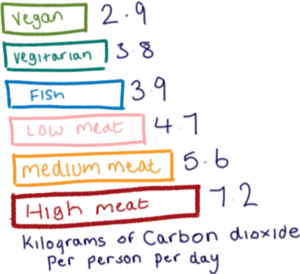Easy To Make Chocolate Yule Log!
The yule log has been a Christmas tradition since way before the medieval times. Originating in Norway, a giant log would be hoisted onto the hearth to celebrate the return of the sun each year. A simple ritual would be held by having each family member write down wishes, place them on the log and burn them on the fireplace. What a wonderful tradition to have, I personally would love to begin this tradition with my own family, why don’t you give it a go too?! (Don’t forget your Firemizer)
![]()
In the 19th century the chocolate log was invented in France, a rolled chocolate sponge cake to resemble a miniature actual yule log. Here we have an easy to follow recipe to make this delicious Christmas treat for you to enjoy.
Ingredients
For the sponge
- 5 eggs
- 100g plain flour
- 50g cocoa powder
- 100g caster sugar
For the topping
- 300ml double cream
- 300g dark chocolate
For the filling
- 300ml double cream, whipped
Method
For the sponge
- Preheat your oven to 180C. Grease and then line the base and sides of a 30 x 35cm Swiss roll tin with baking parchment.
- Separate your eggs, and put into large mixing bowls. Add the sugar and 2 tbsp of water to the egg yolks. Using an electric whisk or mixer, whisk the sugar and yolks for around 5 minutes until the mixture is light in colour and thick enough to leave a trail when the whisk blades are lifted. Sift in the flour and cocoa, then fold in lightly, using a large metal spoon.
- Next beat the egg whites until stiff, then fold into the cake mixture in three batches, using the blades to preserve as much air as possible.
- Pour the mixture into your tin, carefully spreading to the edges. Bake for 10-12 minutes, or until the cake feels firm to the touch.
- Place a large piece of baking parchment onto your work surface and sprinkle lightly with caster sugar. Turn the cake out onto the parchment and peel off the lining paper. Cover with a clean tea towel, then leave to cool completely.
- Then score along the edge of one of the long sides of the cake and roll up from there, using the paper to help you, rolling the paper inside the cake.
For the topping
Heat the cream in a pan then remove from the heat and add the chocolate, stirring until it is melted. Cool to room temperature, then put into the fridge to firm up.
Unroll the cold Swiss roll and remove the paper. Spread the whipped cream on top, and re-roll tightly.
Put the chocolate icing into a piping bag fitted with a star nozzle. Pipe long thick lines along the cake, covering the cake completely so it looks like the bark of a tree. Alternatively, just use a palette knife to spread on the icing and create rough bark texture with a fork.
Finish with a dusting of icing sugar and add your chosen decorations. Tip: sprinkle with edible glitter to make it look extra special!
 Similar traditions
Similar traditions The facts and figures
The facts and figures







